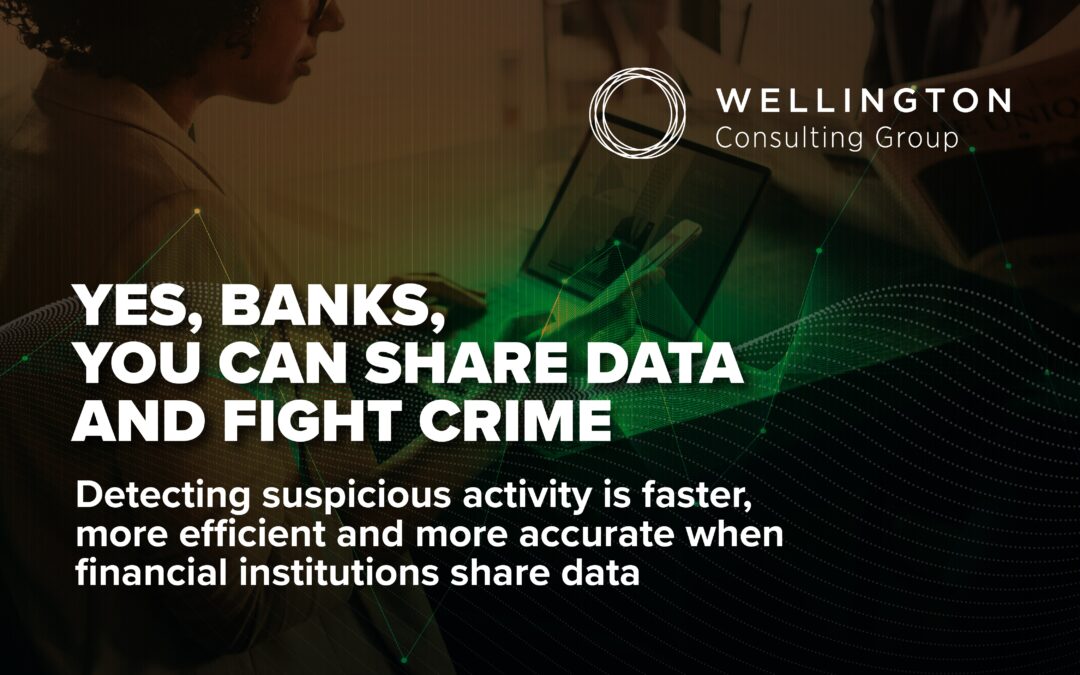Detecting suspicious activity is faster, more efficient and more accurate when financial institutions share data
Criminal activity involving financial transactions continues to run rampant around the world. Bad actors are increasingly sophisticated at finding any loophole in banks to commit crimes, cover their tracks and stay ahead of authorities. However, indicators of such crime – from fraud and anti-money laundering to human trafficking even – can be found in banking data. The challenge comes in filtering it from legitimate financial activity and identifying as much contextual information as possible in order to make a more certain determination.
To establish an accurate picture of suspected criminal operations, financial firms should – and can – increase efforts to share information. This is possible with the latest data innovations such as graph and data fabric, which have evolved tremendously over the last few years. These enable the integration of data as well as its anonymization to comply with data privacy laws, including Canada’s Privacy Act and Personal Information Protection and Electronic Documents Act (PIPEDA).
When it comes to the banks, “You know your customer. You have done the due diligence and you know the nature of the business, but what you are missing is the counterparty information at the other end of the payments,” said Garima Chaudhary, Head of Solution Consulting Financial Crime & Compliance Management for the Americas at Oracle. “Using new technology, like blockchain and graph, gives you the computational power to bring both internal and external info together to understand the counterparty information.”
Leveraging a more comprehensive repository of the banks’ internal and external information along with publicly available data, such as news and public records, helps to build a complete profile to better understand and combat these criminals and their networks. Recent technology advances are making it more possible to identify and assess risks.
“Knowledge graph and graph databases can scale to billions of nodes for global networks of hundreds of millions of officers, directors and businesses. Furthermore, the advances in natural language processing [NLP] – the ability of computers to read as well as humans – is groundbreaking,” said Jeffrey Stein, Founder & CEO, Deep Discovery. “The semantic link relationships are now identifying negative attributes at scale. It is now about putting it all together for the KYC applications.”
What data can banks share?
The perception that financial institutions cannot share data is false. The exciting news is that tools such as encryption and anonymization increasingly enable banks to share data in a secure and privacy-aware manner. Certainly, they can share information extracted from publicly available data. They can also share any suspicious patterns detected. For example, if one bank identifies a fraudulent or even cloned point-of-sale machine that is capturing credit card accounts, those patterns can be reviewed by other banks that might be subject to the same crime.
Through anonymization, banks can also share attributes of individuals or entities and their transactions. Data fabrics enable anonymous sharing of the data profile of a bad actor without revealing personally identifiable information (PII). This information in turn can be reviewed and analyzed by other firms to enhance or further recognize any patterns of potential criminal activity.
New utilities for sharing data
In addition to collaborative sharing between banks to widen their views into criminal activity, new utilities are being developed which will be hugely beneficial in terms of time, effort, costs and most of all, effectiveness. According to A-Team RegTech Insight, “The Monetary Authority of Singapore (MAS) plans to introduce a digital platform and enabling regulatory framework that will allow financial institutions to share data on customers and transactions with the aim of preventing money laundering, terrorism financing, and proliferation financing.” The forthcoming platform, COSMIC, is backed by MAS and six major banks.
Having access to all available information while respecting privacy laws is critical to identifying potentially suspicious transactions and actors, having greater context to distinguish criminal from legitimate activity, pinpointing patterns and relationships, and ultimately preventing crimes such as fraud and human trafficking. As many of our parents and teachers instilled in us as children, it is good to share with others.
To learn more
The team at Wellington Consulting has the specialized expertise in data management and technologies, including knowledge graphs and data fabric systems, to help banks detect criminal activity behind banking transactions, including human trafficking, illicit payments and money laundering. Their experience in integrating various bank resources, data and technology tools, as well as the understanding of trends in fraud and financial crime, has resulted in cost-effective solutions that strengthen banks’ systems and services.
Our three-part blog series, Data: The Secrets That Lie Within, was inspired by an expert discussion at the 2021 Payments Canada SUMMIT on how to use advanced technologies with banking data to identify and counter criminal activity, including money laundering and human trafficking. For more information, view the panel recording and contact the Wellington team.

